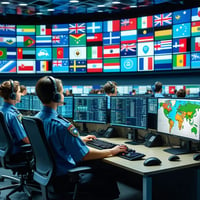Why Traditional Language Lines Fail When You Need Them Most September is about preparedness. But...
Emergency Communication Workflow | Why It Matters
![]()
How a simple idea is changing emergency technology
The Plumber’s Approach to Emergency Tech: Why Workflow Matters
When a pipe bursts, plumbers follow a clear process:
1. Shut off the water.
2. Find the leak.
3. Fix the problem.
4. Test and confirm.
This workflow prevents chaos and saves time. Emergency communications deserve the same approach.
Why Workflow Is Critical in 911 and Public Safety
When emergencies happen, responders can’t waste time figuring out what to do. A clear workflow ensures:
• Calls are routed correctly
• Language barriers are handled fast
• Tech tools support the process instead of slowing it down
What Happens Without Workflow
Without a defined process, teams face:
• Delays in response
• Miscommunication across agencies
• Technology that adds complexity instead of solving problems
A Better Way Forward
The plumber’s mindset teaches us to focus on steps, not just tools. For 911 centers and emergency services, this means:
• Standardizing communication steps
• Integrating translation and interpretation seamlessly
• Training staff on repeatable workflows
Final Takeaway
Like plumbing, emergency tech works best when it follows a reliable process. Strong workflows ensure that when seconds count, your technology empowers—not hinders—your team.
FAQs
Q: Why is workflow important in emergency communication?
A: A clear workflow ensures faster response, accurate call routing, and fewer errors.
Q: How does technology support 911 workflows?
A: The right tools integrate translation, call routing, and communication steps into one streamlined process.
Q: What happens if workflows are unclear?
A: Delays, miscommunication, and slower response times.




